First revealed in 1995, the Subaru Forester has become a core model in the Japanese carmaker’s line-up, and was one of the first few crossover SUVs built in the style of a car, but with a taller stance and a higher seating position.
Capable and practical, the recipe for the Forester has not changed much in the years that followed, with every generation featuring a boxer engine and the company’s Symmetrical All Wheel Drive (AWD) system. Even the styling changes are deemed to be conservative by the masses, as the Forester largely retained its familiar profile across five generations.
Some may say that familiarity breeds contempt, but the Forester is clearly exempted from this, especially if you consider the fact that sales of the model in the United States have steadily increased since it was first introduced there in 1997. Last year alone, over 170,000 units were delivered there, so if the recipe works, Subaru sees no need to radically change it, but to improve upon it further.
That is exactly the case with the current, fifth-generation (SK) Forester, which we had the chance to try out (again) when we embarked on a three-day drive, covering around 1,300 km from Penang to Hat Yai, Pranburi and finally, Bangkok, prior to its Malaysian launch. Unlike our previous encounter with the SUV in Taiwan last year, the lengthy amount of travel on public roads gave us plenty of time to better understand of what it’s like to live with the SUV.
In terms of design, the Forester is more of an evolution rather than a revolution. Highlights include a larger front grille (with an active shutter) flanked by LED headlamps with C-shaped LED daytime running lights, while the rear see C-shaped taillights that are more prominent compared to the outgoing model.
The overall shape is familiar, as mentioned earlier, with large side windows packaged within a boxy body, along with a boot opening has been widened to make loading bulkier items slightly easier. It’s a design that can be described as “traditional,” but it works out well even if it isn’t everyone’s cup of tea, especially if compared to other offerings in the segment.
As with many other recent Subaru models like the Impreza, XV and Ascent, the latest Forester rides on the Subaru Global Platform (SGP), which provides substantially higher levels of torsional rigidity (70 to 100% increase), better handling, a more comfortable ride, reduced NVH and improved passive safety performance.
We’ve already felt the benefits of the architecture while in Taiwan, and this is replicated on our drive, as the Forester provided a comfortable ride throughout out journey. Unlike the previous, fourth-generation (SJ) model that felt a little “floaty” in motion, the new one adopts a firmer but still compliant suspension setup.
Primary ride can be a little sketchy due to a setup that provides a 220 mm ride height, but when faced with small undulations on certain sections of highway, the Forester does well to soak up the bumps, making it a rather pleasant cruiser on long stretches.
When having to deal with what few corners we encountered on our journey, there’s a sense of surefootedness to the SUV, as there was less body roll compared to the SJ, while the AWD and Active Torque Vectoring (by braking) systems help to keep the Forester composed. Forcing the issue by entering certain bends at slightly higher speeds did not faze the SUV significantly either, which is reassuring, but we reckon not many family folk will do anything of the sort on their routine travels anyway.
A more concerning matter for such customers is the NVH, which is rather excellent given the size (and shape) of the vehicle. At highway speeds, most exterior noises are isolated from the cabin, with only a slight intrusion coming from the tyres and wind gushing over the body at higher (and illegal) speeds.
The noise of the horizontally opposed boxer engine is also largely kept in check, but it does make its presence heard when you really need to get a move on, like say, during overtaking. Both the Thailand-spec cars we drove and the Forester sold here use a FB20 2.0 litre naturally-aspirated four-cylinder with 156 PS at 6,000 rpm and 196 Nm of torque at 4,000 rpm, paired with a Lineartronic CVT.
The FB20 mill comes with direct injection, which is an improvement over the previous FA20 used, and by the end of the journey, we logged an average fuel consumption of about 7.8 l/100 km. Keep in mind that this result is with little to no effort on our part to converse fuel, as some of the Thailand media with us that were more adhering to the “Eco Run” theme managed as low as 5.8 l/100 km.
In any case, there is sufficient power here for the standard runabout in the city and to steadily get up to highway speeds, but this admittedly not a very fast SUV. Overtaking does require a bit of advance planning before execution as we found out, and while the transmission is smooth in its operation, the unavoidable “rubber band” effect is present, albeit not to a severe degree.
Of course, this can be remedied by switching to Sport mode using the on-wheel button, which is part of the Subaru Intelligent Drive system. Doing so forces the car to “hold” onto a virtual gear for longer to get you up to speed, which is an improvement up to an extent.
Unfortunately, given that we spent almost all of our time on tarmac, there was no opportunity to try out the X-Mode, or Special X-Mode, in our cars. In essence, the system sets up the powertrain to better deal with more demanding situations like driving on mud, operated with by a dial on the centre console.
On that mention, what about life on the inside then? Well, the seating position is rather nice, providing good visibility all-around, making it easy to judge the car’s size and place it accordingly – some front parking sensors would be appreciated though.
The cabin is also quite spacious thanks to the larger dimensions that come about with the SGP. In its current state, the Forester now measures 4,625 mm long, which is 30 mm more than before, with all of it going to the now-longer 2,670 mm wheelbase. It’s also a wider car, measuring 1,815 mm (+19 mm) from side to side.
As a result, there’s plenty of legroom for those seated in the rear, with the 60:40 split-folding bench also capable of reclining, or easily folded down from the boot via dedicated pull handles. Practicality remains top notch in my opinion, with the 520 litres of boot space effortlessly accommodating four cabin luggage bags and backpacks, with space to spare for some supplies.
There’s also a generous amount of well thought out storage spaces, including a small cubby and cupholders on either side of the gear lever, along with another small section just behind the latter. Meanwhile, the storage area under the centre armrest can accommodate my DSLR camera easily, and there’s a cable pass through should you need to use the 12 V charging port within.
Moving to the rear, there are two USB charging ports just below the rear air vents, and the backrests of the front seats have storage pockets that are segmented for easy organisation. With four passengers in the car like we had, almost all these storage solutions were effectively used, and were actually very handy in our opinion.
The dashboard is similar to what Subaru has done with the exterior, as it’s still largely recognisable to the outgoing model, albeit with some changes, chief among which is the primary display that is now enlarged to eight inches, displacing the centre air vents to its side.
There’s still a secondary upper screen that displays fluid temperatures and some off-roading information like vehicle pitch, while the driver has analogue dials with a multi-info display sandwiched in the middle. All these items, along with the switchgear for the dual-zone automatic air-conditioning feature crisp graphics and fonts.
However, a downside here is the head unit that is used, which feels out of place relative to everything else in the car. Put simply, it’s rather archaic in look and functionality, with standard features being various media inputs, Bluetooth, radio, phone connectivity and navigation – there’s no Apple CarPlay or Android Auto support here.
While we’re on the topic of things that could be better, it would be nice to be able to adjust the lumbar of the front seats, as the bottom half does push out rather far forward. Depending on your body type and size, this may or may not affect you, but in my case, it did had me having to shift my bottom from time to time to get comfortable. Additionally, while the rear seats are supportive, it would be appreciated if the seatback sunk in just a tad bit more to make it feel less like you’re sitting on an upright bench.
With all said and done, the Forester is a really capable and good all-rounder SUV, doing everything you expect of it without much of a fuss – a good family workhorse if you will. A comfortable ride and a practical, well-executed interior are some of the high points of the Forester, and it remains the only SUV in the segment with AWD as standard across the variant range.
It isn’t perfect, as the powertrain could do with more oomph and some aspects could be made better. However, the overall package, including its boosted safety kit (now with EyeSight), is well tailored to meet the demands of most in the market for a family SUV, and should make those considering a Honda CR-V or Mazda CX-5 to think a little harder before deciding.
The Forester sold here comes fully-imported (CBU) from Thailand, and is offered in three variants, with prices starting at RM139,788 for the base 2.0i-L while the 2.0i-S goes for RM149,788, and at the very top is the 2.0i-S ES that retails for RM159,788; all prices are inclusive of a five-year/100,000-km warranty.
Looking to sell your car? Sell it with Carro.

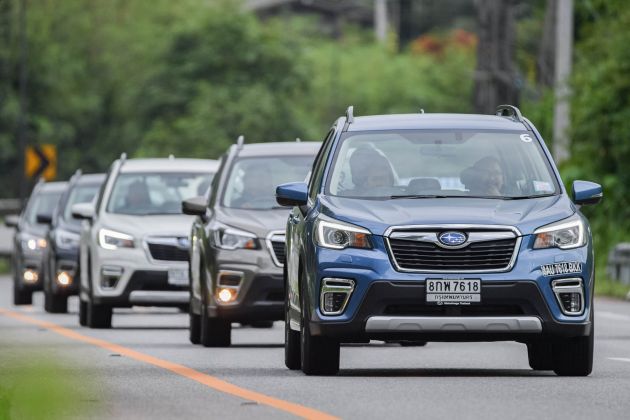



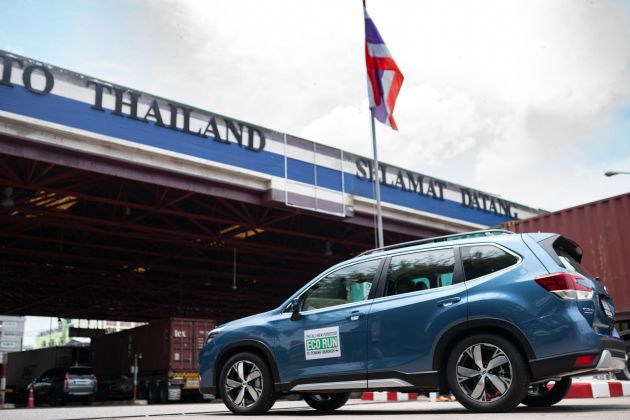



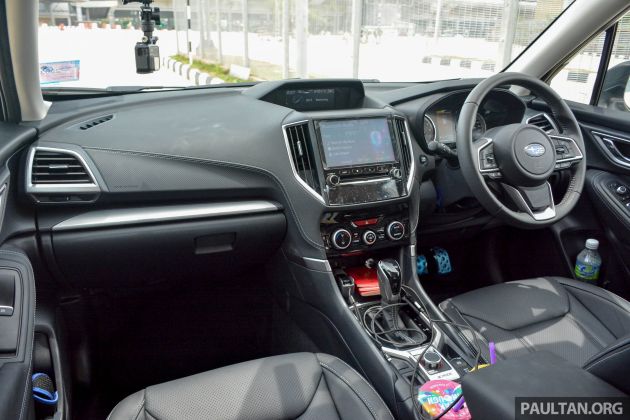










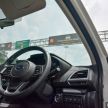

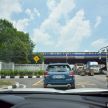








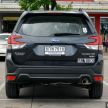



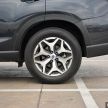



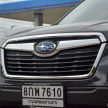
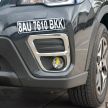


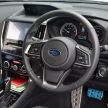
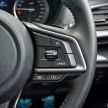
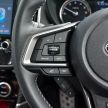

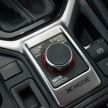

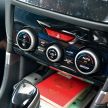

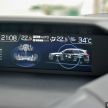
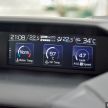
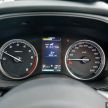
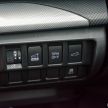

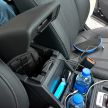
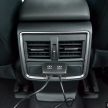

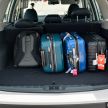
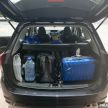




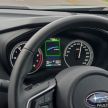
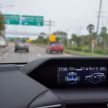







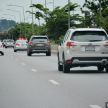
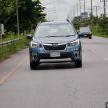



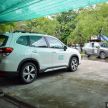






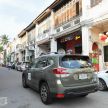
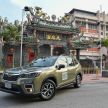








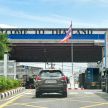
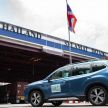

















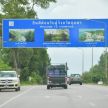
















Comfort and spacious. best family SUV,
(Like) 2019 Proton X70 Premium.
(Dislike) 2019 Subaru Forester 2.0i-S
There is no need for polls Mario!
No guts to do 13,000 km trip to Hangzhou and back (26,000km in total)?
Both balik kampong trip. Lolz
you cannot just drive into China with a foreign car easily. there are lots of documents and $$ needed + a Mainland driving license. you also would need a tour guide with you. PRC laws :)
Don’t buy his car if your daily commute is within the KL metro area, due to the lazy, lower torque CVT gearbox it’ll drink petrol like nobodies business.
I love subaru’s, but have now regretted getting one for my daily driver in the city.
Shhhhh, Jepunis car fanbois will shout Fitnah.
All Jepunis cars sip petrol like a Geisha elegantly sips her sake.
heck, 1300km is nothing to test/review the spanking new vehicle. Malaysian doing daily commuting to work and back home is easily comparable to such stunt. Try doing it in old-beat up cars while at it.
Para 13, Line 4 “no effort on our part to converse fuel..”
Shouldn’t it be CONSERVE ?
needs the turbo
Sigh…..still no XT in sight.
Is the Subaru Forester a crossover or SUV? It is described by Subaru as a crossover and so this article in its introduction. But midway, it was called a SUV.